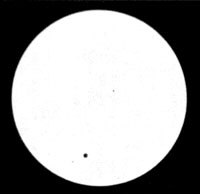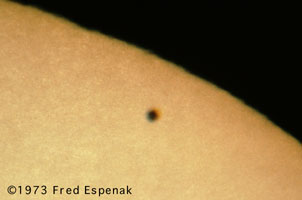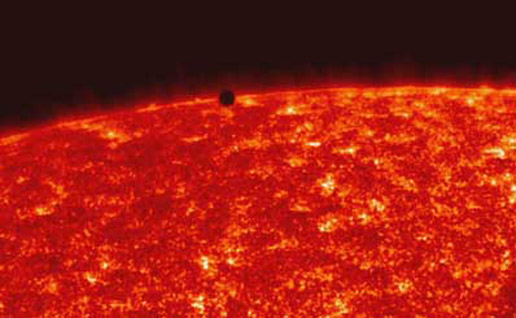Mercury Transit
Similar to an eclipse, Mercury moved between the sun & earth over 5.5 hours.
Photo Credit: NASA’s Goddard Space Flight Center
There’s a little black spot on the sun today
November 11, 2019 • 7:35 a.m. EST (12:35 GMT)–1:04 p.m. EST (18:04 GMT)
Credit: NASA’s Goddard Space Flight Center/Genna Duberstein • Music Credit: Frosted Lace by Matthew Charles Gilbert Davidson
Video Credit: NASA Goddard Space Flight Center
Mercury’s diameter is 3,032 miles.
The Sun’s diameter is 864,340 miles.
You could line up 285 Mercurys side-by-side from one side of the Sun to the other but Mercury’s apparent size is a little bigger since it is closer to us than the sun. If you lined up Mercurys across the face of the Sun you could fit 285 Mercurys. This is just like if you lined up Earths across the Sun you could fit about 109 or so. But since Mercury is orbiting the Sun and closer to Earth, it appears slightly bigger than its actual size when it is next to the Sun.
The apparent speed of Mercury as it travels from one edge of the Sun to the other is about 150,000 miles per hour.
Video Credit: NASA-JPL/Caltech
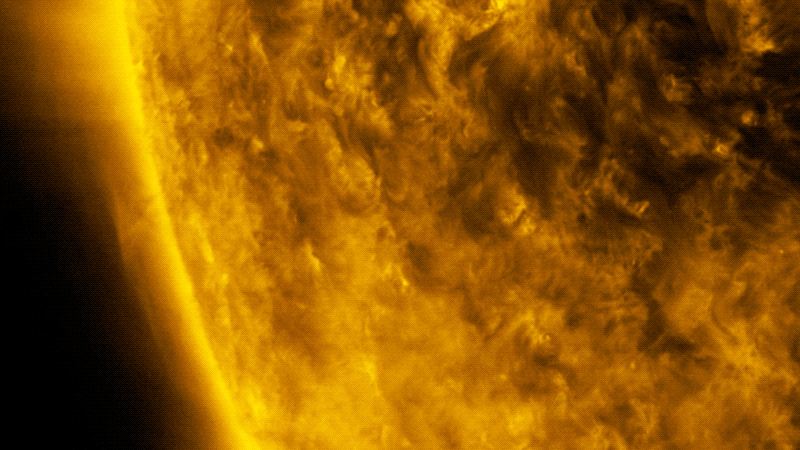
NASA’s Solar Dynamics Observatory captured this view of Mercury transiting the Sun on May 9, 2016. Credit: NASA
13 or 14 Mercury transits occur during a century.
This century has 14 Mercury transits that fall within several days around May 8 and November 10. During the November transits the disk of Mercury appear about 10 arcseconds across and during May transits Mercury appears about 12 arcseconds across. The Sun appears 1920 arcseconds across (diameter) so Mercury appears 192 times smaller across during November and 160 times smaller across during May transits.
The reasons that transits don’t happen during those 3 or 4 times is basically the same reason that solar eclipses don’t happen every month during a new moon.
The orbit of Mercury is inclined with respect to the Earth/Sun plane by about 7 degrees. The Sun is on ½ degree in the sky so most of the time Mercury is above or below the Sun with respect to Earth during those 3 or 4 yearly passes. Only on a few occasions (13 or 14 times) a century does it actual cross the solar disk.
Transits provide a great opportunity to study the way planets and stars move in space– information that has been used throughout the ages to better understand the solar system and which still helps scientists today calibrate their instruments.
| Date | Universal Time |
|---|---|
| 2003 May 07 | 7:52 |
| 2006 Nov 08 | 21:41 |
| 2016 May 09 | 14:57 |
| 2019 Nov 11 | 15:20 |
| 2032 Nov 13 | 8:54 |
| 2039 Nov 07 | >8:46 |
| 2049 May 07 | 14:24 |
| 2052 Nov 09 | 2:30 |
| 2062 May 10 | 21:37 |
| 2065 Nov 11 | 20:07 |
| 2078 Nov 14 | 13:42 |
| 2085 Nov 07 | 13:36 |
| 2095 May 08 | 21:08 |
| 2098 Nov 10 | 7:18 |
Learn more:
- NASA Tumblr Post
- JPL Education Page
- Video – What’s Up for November
- Night Sky Network (viewing information)
- Stages to Watch For
- The Astronomical History of This Rare Celestial Event
- A Mercury Transit for the Ages: November 1973
- How Astronomers Will Study the Rare Celestial Event
- A Teachable Moment in the Sky
Video Credit: NASA Goddard Space Flight Center & C. Alex Young – May 9, 2016
Video Credit: NASA SpaceCasts
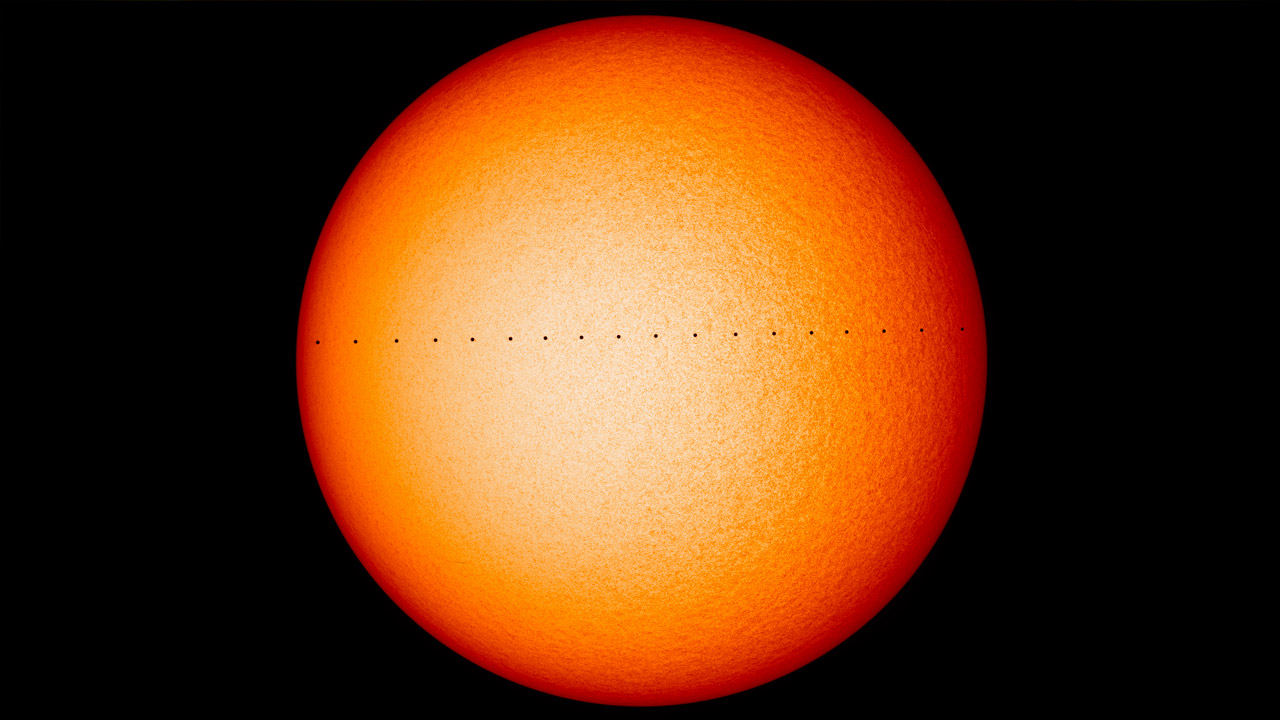
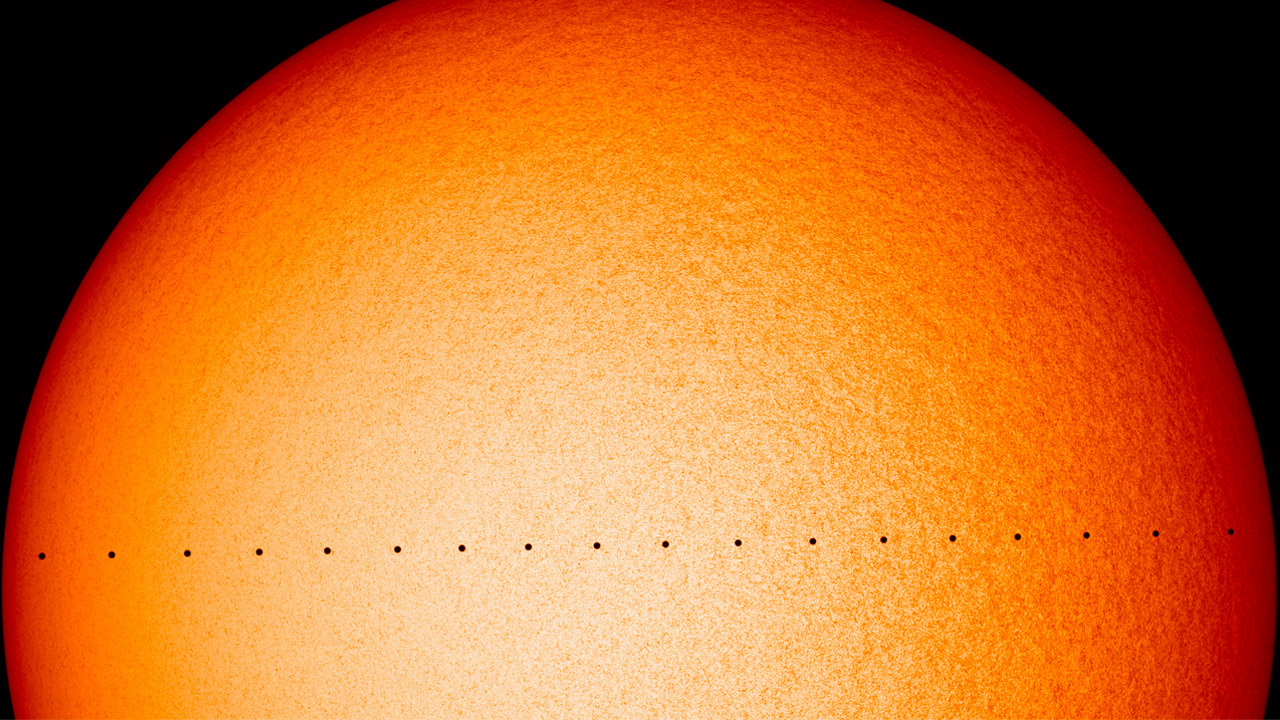
Composite image of Mercury transit across the Sun, as seen by NASA’s Solar Dynamics Oberservatory on Nov. 11, 2019. CREDIT: NASA’s Goddard Space Flight Center/SDO
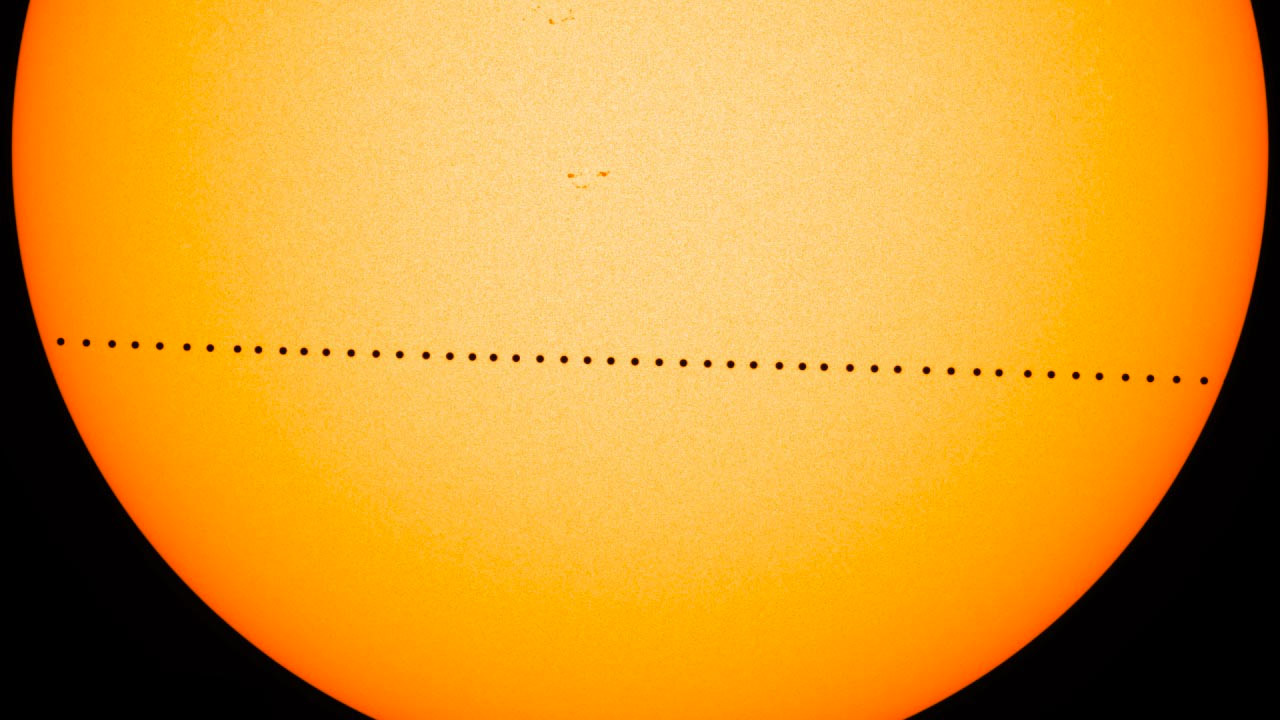
Composite image of Mercury transiting across the sun on May 9, 2016, as seen by HMI on NASA’s Solar Dynamics Obersvatory. HMI is an instrument designed to study the magnetic field at the solar surface, or photosphere. Credit: NASA/SDO
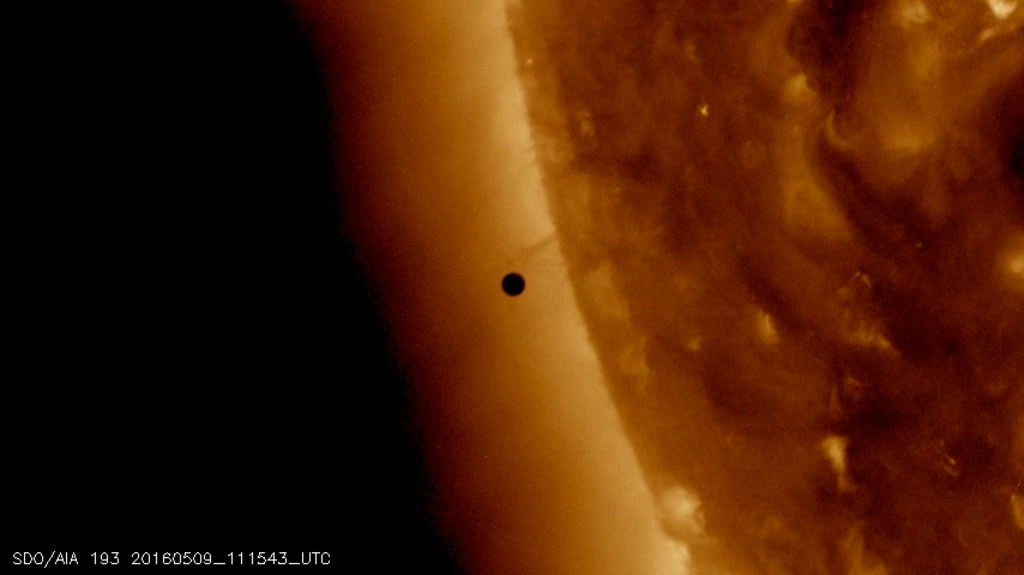
The Solar Dynamics Observatory captured images of Mercury transiting across the sun on May 9, 2016.
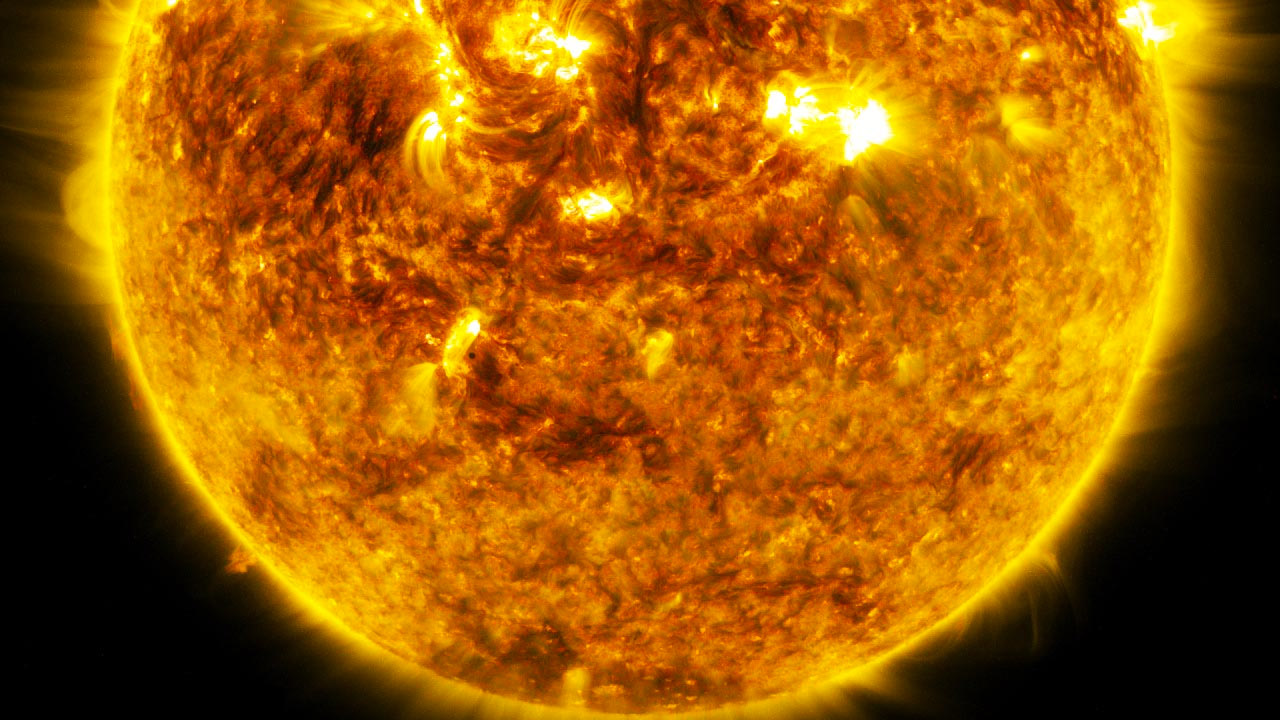
Look closely! Can you see the 2016 Mercury Transit, as seen by NASA’s SDO in a blend of 304 and 171 Angstroms? Credit: NASA/SDO
Watch it Online
NOTES: This data is coming down as fast as it can from the satellite, it will end up being 10-15 minutes behind real-time. Because of SDO’s position in orbit ~22,000 miles above Earth, its times for seeing the transit are slightly different from on Earth (starting at 7:41am ET for SDO, vs 7:35am ET on the ground).
PROTECT YOUR EYES!
How can I view the transit safely?
The most important this to remember is that it is never safe to look directly at the sun without the proper safety glasses!! Unlike a total solar eclipse during totality, Mercury is too small so safely block out the sun. There is a lot of great information at NASA and the AAS (American Astronomical Society) about how to safely look directly at the sun as well as indirectly.
You cannot look directly at the Sun!!
You can use solar viewing glasses (eclipse glasses) but it will be very difficult to make Mercury out as it’s so small.
You can use a telescope/binoculars with properly fitted certified solar filters (but it is not safe to use eclipse glasses in combination with a telescope/binoculars) – check with local astronomy club for events.
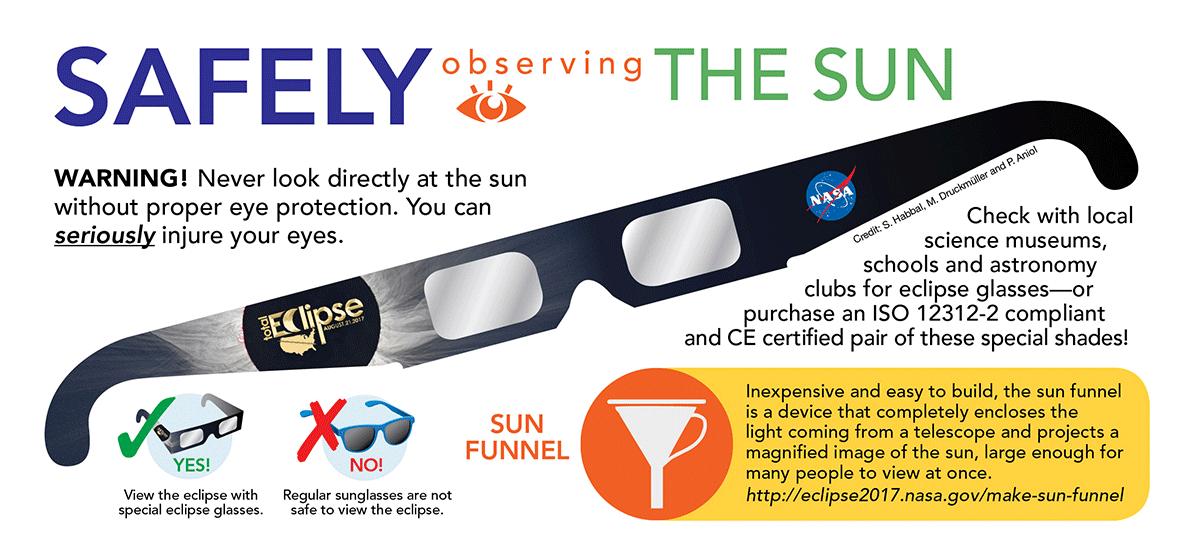
CREDIT: NASA Goddard/SVS


